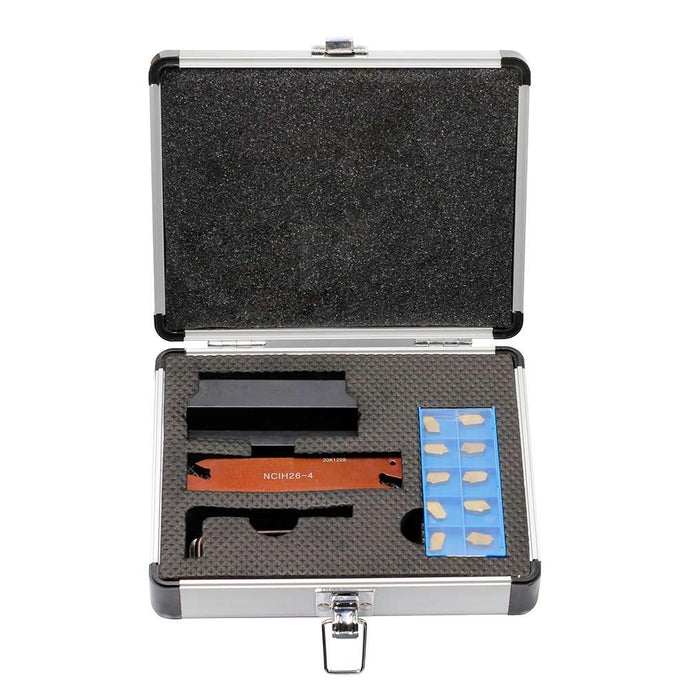| Tungsten Carbide Inserts: The Cornerstone of Modern Cutting and Machining |
In the world of manufacturing, precision is key. Whether it's automotive parts, aerospace components, or intricate medical devices, the need for accurate, high-performance cutting tools is paramount. One material has emerged as a linchpin in achieving this precision: tungsten carbide. Among its many applications, tungsten carbide inserts are considered indispensable in machining, providing a perfect blend of strength, durability, and versatility. These inserts have revolutionized various industries, offering a balance between cost-effectiveness and performance that other materials find difficult to match.
Tungsten carbide inserts are cutting tools made from an alloy of tungsten and carbon. Known for their exceptional hardness, these inserts are designed to withstand the stresses and demands of high-speed machining operations. The key factor that makes tungsten carbide stand out from other materials is its hardness. It is second only to diamond on the Mohs scale, which is a testament to its ability to maintain sharp edges and resist wear even under the most punishing conditions. This hardness is particularly important in industries where extended tool life is critical, as it reduces the need for frequent replacements, saving both time and money.
The durability of tungsten carbide inserts makes them suitable for a wide range of cutting applications, including turning, milling, drilling, and boring. In turning operations, for instance, these inserts can handle high speeds and feed rates, which leads to faster production times and better surface finishes. Milling operations also benefit from their use, as the inserts allow for more aggressive cutting, resulting in increased productivity. In drilling and boring, tungsten carbide inserts help in maintaining precision over longer runs, preventing deviations in the workpiece that can result from tool wear. This versatility is why they are found in everything from heavy machinery to fine, detailed parts.
A key aspect of tungsten carbide inserts is their resistance to wear. In any cutting or machining operation, wear on the tool can lead to a decrease in accuracy, poor surface finish, and ultimately, tool failure. Tungsten carbide's natural wear resistance minimizes these issues, ensuring that the inserts maintain their sharpness and performance over a longer period. This wear resistance is especially important when machining hard materials such as stainless steel, titanium, or superalloys, where softer tools would quickly degrade. By maintaining their cutting edges, tungsten carbide inserts reduce the overall cost of manufacturing, as fewer tools need to be purchased and downtime due to tool changes is minimized.
Another major advantage of tungsten carbide inserts is their ability to handle extreme temperatures. Machining operations often generate significant heat, which can lead to thermal expansion and deformation of the tool. Many materials lose their hardness when subjected to high temperatures, but tungsten carbide remains stable, maintaining its strength and hardness even under these conditions. This heat resistance allows the inserts to be used in high-speed operations where cutting tools are exposed to extreme thermal and mechanical stresses. The ability to maintain performance in these conditions is one of the reasons why tungsten carbide inserts are the preferred choice in industries that demand reliability and high performance, such as aerospace and automotive manufacturing.
The precision and performance of tungsten carbide inserts are also enhanced by their ability to be tailored to specific applications. Manufacturers can produce inserts with various geometries, coatings, and chip-breaking features, each designed to optimize performance for different materials and cutting conditions. For example, inserts with sharp, positive cutting edges are ideal for cutting softer materials, while those with negative rake angles can better handle tougher materials. Coatings such as titanium nitride (TiN) or aluminum oxide (Al2O3) can be applied to further enhance the inserts' performance, providing additional protection against wear, oxidation, and thermal damage. This customization ensures that tungsten carbide inserts can be adapted to meet the specific needs of any machining process.
The cost-effectiveness of tungsten carbide inserts is another reason for their widespread adoption. Although the initial investment in tungsten carbide tools may be higher than for other materials, their long lifespan and superior performance make them a more economical choice in the long run. The reduced need for tool changes and maintenance, coupled with the increased productivity they provide, translates into lower overall costs for manufacturers. In industries where time is money, and every minute of downtime can result in significant losses, the reliability and durability of tungsten carbide inserts offer a clear advantage.
Moreover, the environmental benefits of tungsten carbide inserts should not be overlooked. The durability and long lifespan of these tools mean fewer inserts need to be produced and replaced, reducing the demand for raw materials and energy. Additionally, tungsten carbide is recyclable, which contributes to a more sustainable manufacturing process. Many companies in the cutting tool industry now offer recycling programs, allowing manufacturers to return worn-out inserts to be repurposed or reprocessed into new tools. This not only reduces waste but also helps conserve valuable resources.
In conclusion, tungsten carbide inserts have become a cornerstone of modern cutting and machining operations. Their unmatched hardness, wear resistance, and ability to perform under extreme conditions make them an ideal choice for industries that demand precision and reliability. Whether in high-speed turning, milling, drilling, or boring, tungsten carbide inserts consistently deliver superior performance, reducing costs and improving productivity. As manufacturing continues to evolve, the role of tungsten carbide in shaping the future of machining is certain to remain as strong and enduring as the material itself.

|
|
|


